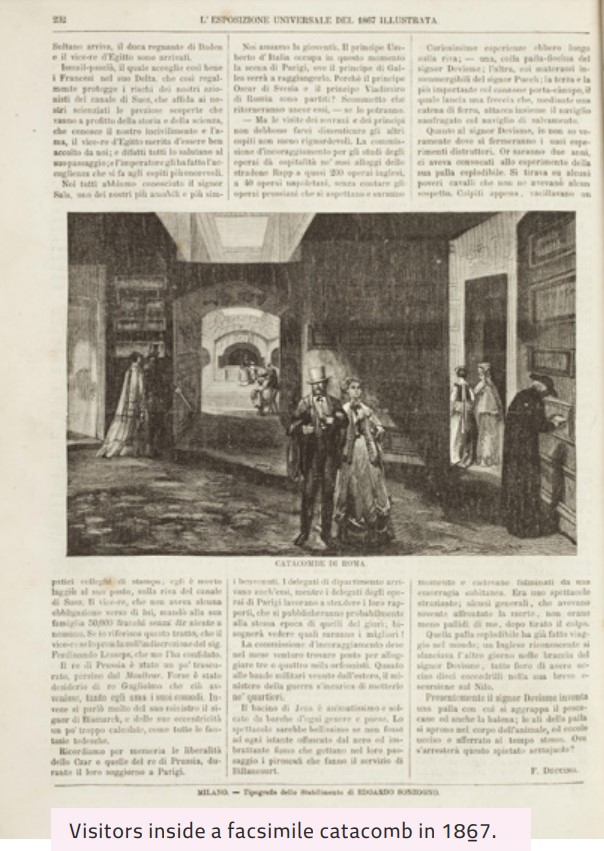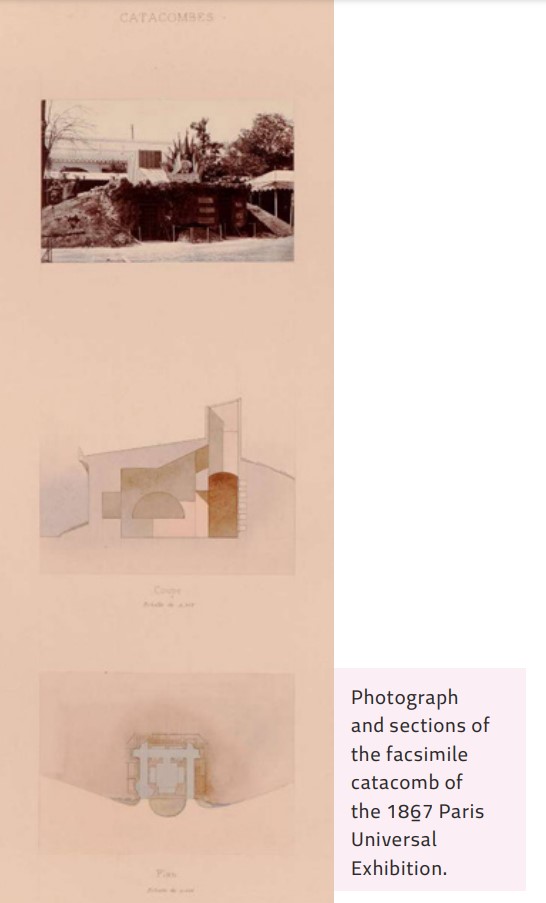Reasearch - Living in the catacombs!
Newsletter

Living the catacombs! (LIT!) project has the main objective of investigating extensively the social and cultural phenomenon of catacomb facsimile in late 19th - early 20th century Europe. Chiara Cecalupo shares her research trajectory and scientific aims.
The history of the reception of antiquity is European history. No major archaeological discovery in recent times has ever been confined to its geographical area but has always been the subject of great interest to scholars and common people across the continent. This has made archaeology an interesting and exciting subject in Europe for many centuries. The LIT! project starts from the international appeal of archaeological discovery and analyses one of the most intriguing phenomena of dissemination of antiquarian and archaeological culture: the birth of facsimile catacombs.
What do Rome (Italy), Paris (France), Valkenburg (The Netherlands), and Solin (Croatia) have in common between the late 19th and early 20th centuries? In these and many other small and large cities, the custom of setting up rooms decorated in the manner of the catacombs became widespread. In several cases, we record even entire facsimile catacombs, i.e. life-size copies of the most famous hypogeal monuments of early Christianity of Rome, which archaeologists had been rediscovering since the mid-19th century. The phenomenon was very wideranging and involved many European nations, so much so that it can be considered one of the main vehicles for the international dissemination of early Christian archaeology among different social classes. Despite the importance of the trend of catacomb facsimile in late 19th century Europe, a comprehensive global study of its political and social implications has never been carried out.
This project works on the in-depth study of known cases to rescue the numerous stories that are unknown today. The detailed analysis of individual cases allows us to turn the spotlight on single events and their influences on European society, to understand the cultural impact of archaeological discoveries in Rome throughout Europe, regardless of contemporary political relations. The multiplicity of sources used and above all the study of cases in different European countries (with a large number of European institutions and languages involved) contributes to the international nature of this research.
Indeed, the timespan of the diffusion of facsimile catacombs is not of secondary importance: its international spread took place during a remarkable cultural moment in Europe.
Firstly, the phenomenon can be connected to the coeval diffusion of exact copies for the reproduction of the European main monuments and works of art for study, protection, conservation, and also for the dissemination of antiquarian styles and fashions.
Secondly, the political factor is at the heart of this study, as the phenomenon, strongly linked to the Roman Catholic tradition, spreads during a time of disintegration of the empires and the birth of contemporary European states.

The broader objective of the LIT! project is to contribute to the knowledge of the long and endemic process of forming a common identity between Southern and Northern Europe through the rediscovery and promotion of archaeological cultural heritage. In this way, the project uses a single phenomenon that has not been studied extensively to contribute to the understanding of the centuries-old cultural relations between European states and their common history.
You can follow the project at https://catacombsrediscovery.com/ and https://www.uc3m.es/research/conex.
Chiara Cecalupo
Universitad Carlos III de Madrid, Spain
chiara.cecalupo@uc3m.es